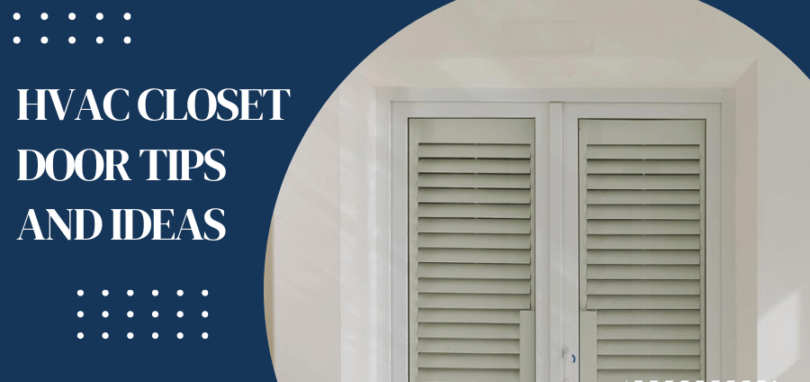Introduction:
Many households with air conditioning systems face the challenge of finding a suitable location for their HVAC systems. While attics have traditionally been the preferred spot, the need for additional storage space has led homeowners to consider closets as an alternative. This shift has prompted inquiries into how best to utilize this storage solution. In this article, we explore the advantages of placing HVAC systems in closets and provide insights into selecting the right cabinet door to enhance both functionality and appearance.
Benefits of Closet Placement:
Placing your home’s HVAC system in a closet offers a dual advantage. Firstly, it improves the aesthetic appeal of the living space, as the HVAC unit is concealed. Secondly, it ensures that maintenance personnel have ample room to maneuver around the cabinet. To maintain cleanliness and efficiency, it is crucial to install a closet door that not only complements the overall design but also facilitates easy access for maintenance.
Basics of HVAC Systems:
HVAC systems play a vital role in regulating indoor temperatures, circulating warm or cold air as needed. Proper placement of these systems is a subject of debate among homeowners and contractors. While attics have been a traditional choice, a consensus is emerging that housing HVAC units in dedicated cabinets within the living space provides better accessibility and maintenance opportunities.
Planning an HVAC Closet:
When planning an HVAC closet, adherence to recommended dimensions is essential. For electrical units, the suggested measurements include 6-8 inches on each side, an inch at the back, and 8-12 inches at the front. Complying with building standards ensures proper dimensions. Additionally, the cabinet door should be slightly wider than the HVAC unit to allow for easy removal.
Choosing the Right HVAC Closet Door:
Selecting an appropriate closet door contributes to reducing system noise and enhancing the overall aesthetic. Louver doors are popular for their ventilation capabilities, ensuring the HVAC unit receives the necessary outside air. Other options include shutters, slide gates, and bypass doors, each offering unique features to suit different preferences.
Reducing HVAC System Noise:
To mitigate the noise produced by HVAC systems, homeowners can consider soundproofing measures. Installing a weather seal, using acoustic sealant, and incorporating anti-vibration mounts made of rubber or steel are effective solutions. Additional drywall can also be added to the cabinet or built around the unit to further reduce noise levels.
Optimizing Space:
Placing HVAC systems in closets contributes to space-saving in living areas. To compensate for the floor space lost, homeowners can incorporate shelves, multipurpose furniture, and creative storage solutions. Customizable doors, such as bookshelf doors, not only conceal the HVAC unit but also provide additional storage space.
Conclusion:
Choosing the right HVAC closet door is a crucial aspect of optimizing both functionality and aesthetics. By selecting doors that complement the overall design, reduce noise, and allow for proper ventilation, homeowners can enhance the efficiency and appearance of their HVAC systems while saving valuable living space.
Disclosure: We may get commissions for purchases made through links in this post.








